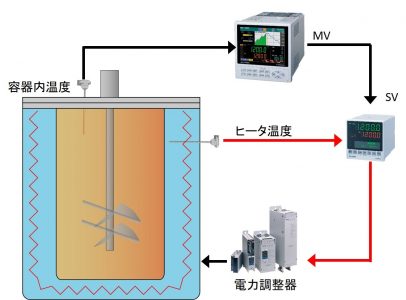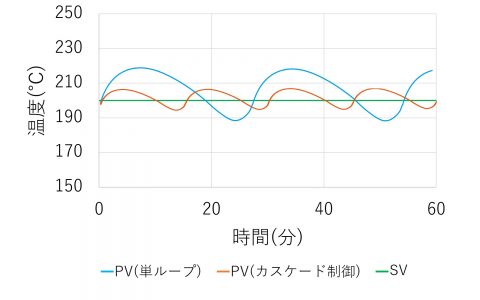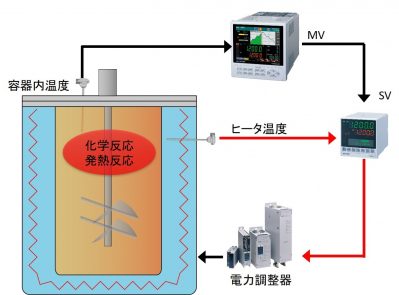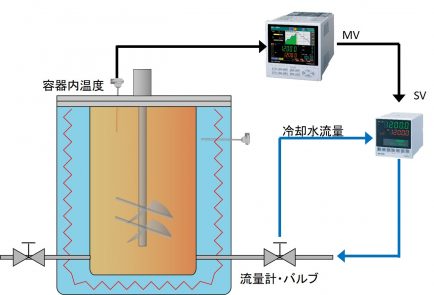This section explains the basics of cascade control.
In systems where the temperature sensor and heater are far apart, this has the effect of suppressing vibration (hunting).
This is effective for systems where the temperature finally rises when 100% output is applied.
In a large furnace, the distance between the temperature sensor and the heater is long, so the temperature does not rise easily even when 100% output is applied...
Have you ever found yourself in a situation like this? In such a case, cascade control, which links two controllers, is effective.
>
| Single Loop System | Cascade System |
 |  |
This has the effect of "suppressing vibration (hunting)."

Cascade control has improved control
Cascading constant for even better results

control can be further improved by using the cascade constant a, b, and c, which are only available with DP-G.
For more information, see
How to set cascading constant.
It is also effective in "self-heating systems" and "systems in which temperature and flow rate are linked."
| Ex. Self-heating due to chemical reactions, etc. | Ex. Temperature control with cooling water |
 |
 |
| In addition to the heating by the heater, the heat of reaction generated when a substance undergoes a chemical reaction inside the container can raise the temperature inside the container. This improves control against such disturbance. |
In order to control temperature, the flow rate of cooling water may be control. Cascade control is also effective in control temperature using physical quantities other than temperature. |
Cascade control Basics



